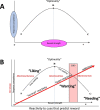Assessment and treatment of compulsive sexual behavior disorder: a sexual medicine perspective
- PMID: 38529667
- PMCID: PMC11214846
- DOI: 10.1093/sxmrev/qeae014
Assessment and treatment of compulsive sexual behavior disorder: a sexual medicine perspective
Abstract
Introduction: The addition of compulsive sexual behavior disorder (CSBD) into the ICD-11 chapter on mental, behavioral, or neurodevelopmental disorders has greatly stimulated research and controversy around compulsive sexual behavior, or what has been termed "hypersexual disorder," "sexual addiction," "porn addiction," "sexual compulsivity," and "out-of-control sexual behavior."
Objectives: To identify where concerns exist from the perspective of sexual medicine and what can be done to resolve them.
Methods: A scientific review committee convened by the International Society for Sexual Medicine reviewed pertinent literature and discussed clinical research and experience related to CSBD diagnoses and misdiagnoses, pathologizing nonheteronormative sexual behavior, basic research on potential underlying causes of CSBD, its relationship to paraphilic disorder, and its potential sexual health consequences. The panel used a modified Delphi method to reach consensus on these issues.
Results: CSBD was differentiated from other sexual activity on the basis of the ICD-11 diagnostic criteria, and issues regarding sexual medicine and sexual health were identified. Concerns were raised about self-labeling processes, attitudes hostile to sexual pleasure, pathologizing of nonheteronormative sexual behavior and high sexual desire, mixing of normative attitudes with clinical distress, and the belief that masturbation and pornography use represent "unhealthy" sexual behavior. A guide to CSBD case formulation and care/treatment recommendations was proposed.
Conclusions: Clinical sexologic and sexual medicine expertise for the diagnosis and treatment of CSBD in the psychiatric-psychotherapeutic context is imperative to differentiate and understand the determinants and impact of CSBD and related "out-of-control sexual behaviors" on mental and sexual well-being, to detect forensically relevant and nonrelevant forms, and to refine best practices in care and treatment. Evidence-based, sexual medicine-informed therapies should be offered to achieve a positive and respectful approach to sexuality and the possibility of having pleasurable and safe sexual experiences.
Keywords: ICD-11; assessment; comorbidity; compulsive sexual behavior; diagnosis; hypersexuality; impulse control disorder; paraphilias; sex/porn “addiction”; treatment.
© The Author(s) 2024. Published by Oxford University Press on behalf of The International Society of Sexual Medicine.
Conflict of interest statement
J.G.P. is a consultant for FirmTech, Kanna Health, Ovoca Bio/IVIX, Reunion Neuroscience, SmartBod/Lioness, and Vella Bioscience and serves as editor in chief of
Figures




References
-
- World Health Organization . International Classification of Diseases, Eleventh Revision. WHO Press; 2019/2021.
-
- American Psychiatric Association . Diagnostic and Statistical Manual of Mental Disorders. 5th ed. American Psychiatric Publishing; 2013.
-
- von Krafft-Ebing R. Psychopathia Sexualis. Rebman FJ, trans. Physicians and Surgeons Book Company; 1886/1929.

